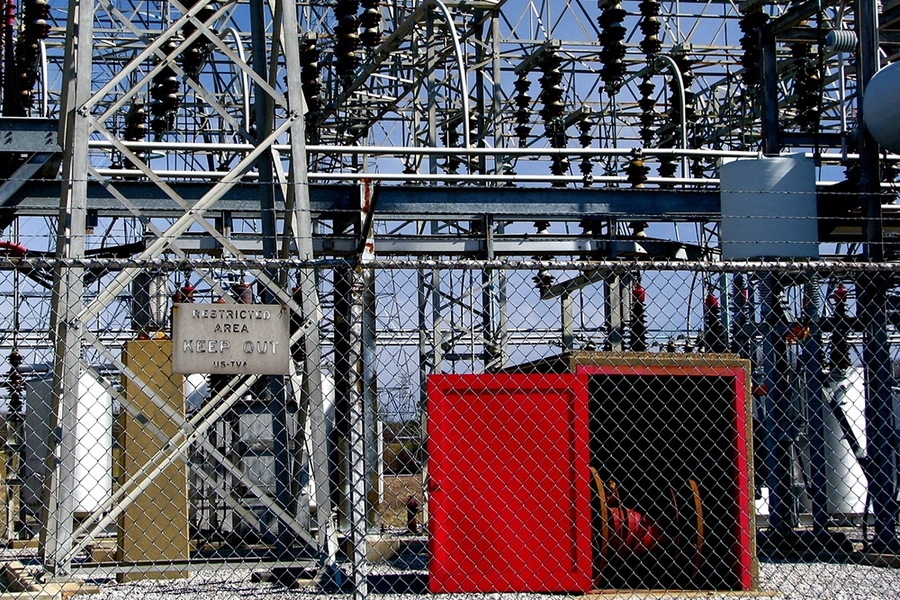Nine of the 10 biggest blackouts in U.S. history were caused by hurricanes, whose sustained high winds have knocked out power lines over broad geographical areas. Topping the list is Hurricane Maria, which in October disabled the electric grid in Puerto Rico and the U.S. Virgin Islands, leaving the majority of the populations there without power for months.
Climate scientists project that as the global average surface temperature continues to rise, so too will the frequency and intensity of major storms, as well as of heat waves and high temperatures. As a result, we are likely to see even more widespread power outages — not only from hurricane winds but also from the effects of prolonged and extreme heat on a critical yet vulnerable component of the power grid: the large power transformer (LPT).
LPTs are transformers rated at or above 100 MVA (mega volt-amperes), and thousands are deployed across the U.S. The current stock of LPTs is old: Seventy percent or more are 25 years or older. They have an expected lifetime of 40 years, and are very costly and time-consuming to replace.
Driven by global warming, more frequent and intense heat waves may degrade the operational lifetimes of LPTs and increase the risk of their premature failure. Overheating reduces the structural integrity of the electrical paper insulation used in LPTs, causing catastrophic short circuits. The failure rate becomes more pronounced as rising temperatures cause more intense chemical reactions that age the insulation. Widespread LPT failure could lead to long-lasting grid disruption — with collateral impacts on grid-reliant systems such as communications, financial, and cyber systems — and major economic losses.
To assess the accelerated risk of LPT failure in coming decades, researchers from the MIT Joint Program on the Science and Policy of Global Change and MIT Lincoln Laboratory studied the potential impact of global warming and corresponding shifts in summertime hot days on LPT lifetime at an LPT location in the U.S. Northeast. They found that for a background 1 degree Celcius rise in temperature, the lifetime of the transformer decreases by four years, or by 10 percent. Therefore, end-of-century mean global warming projections of approximately 2 degrees (a climate policy-driven scenario) and 4 degrees (a business-as-usual scenario) would result in a mean reduction in expected transformer lifetime of 20 to 40 percent. The results of the study are reported in the journal Climatic Change.
“Studies such as these spotlight how vulnerable the intricate electrical network upon which we rely is to damaging weather and climate events,” says Joint Program Deputy Director C. Adam Schlosser, a co-author of the study. “Our electric grid is tasked with maintaining operations at-or-nearly 100 percent of the time, even under extreme weather and climate conditions, and so growing risks and threats must be quantified in order to inform action and implement the proper strategies proactively and cost-effectively.”
The researchers also assessed the future changes in hot-day occurrence under the 2-degree and 4-degree climate scenarios, using two different approaches: a conventional method that detects the occurrence of hot days based on the projected daily maximum temperature from a suite of climate models, and a recently developed analogue method that instead uses climate model-simulated large-scale atmospheric patterns (e.g., wind and pressure conditions) associated with observed local extreme temperature.
Both methods indicate strong decadal increases in hot-day frequency. By the late 21st century, the median number of summertime hot days per year could double under the 2-degree scenario and increase fivefold under the 4-degree scenario, along with the aforementioned decreases in transformer lifetime.
Most importantly, the analogue method showed far greater inter-model consensus — i.e., a smaller range of outcomes in the results.
“The improved inter-model consensus of the analogue method is a promising step toward providing actionable information for a more stable, reliable and environmentally responsible national grid,” says Xiang Gao, the study’s lead author.








